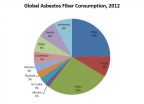(Press-News.org) (SACRAMENTO, Calif.) -- Children with autism spectrum disorder (ASD) were more than twice as likely to have been exposed in utero to preeclampsia, and the likelihood of an autism diagnosis was even greater if the mother experienced more severe disease, a large study by researchers with the UC Davis MIND Institute has found.
Women with preeclampsia experience hypertension during the latter half of their pregnancies, and may have increased levels of protein in their urine and edema, or fluid retention. Preeclampsia can develop into eclampsia, a life-threatening condition in which seizures may occur.
The study was conducted in more than 1,000 children between the ages of two and three years enrolled in the Childhood Risks of Autism from Genetics and the Environment (CHARGE) Study in Northern California. It is published online today in JAMA Pediatrics.
"We found significant associations between preeclampsia and ASD that increased with severity. We also observed a significant association between severe preeclampsia and developmental delay," said Cheryl Walker, study senior author, assistant professor, Department of Obstetrics and Gynecology Division of Maternal Fetal Medicine and a researcher affiliated with the UC Davis MIND Institute.
While preeclampsia has previously been examined as a risk factor for autism, the literature has been inconsistent. The current study provides a robust population-based, case-controlled examination of the association between autism and preeclampsia and whether risk was associated with preeclampsia severity.
The research was conducted in more than 500 male and female children diagnosed with autism; nearly 200 diagnosed with developmental delay; and 350 children who were developing typically. All of the mothers had confirmed diagnoses of preeclampsia.
It found that the mothers of children with autism were more than twice as likely to have had pregnancies complicated by preeclampsia. Mothers of children with autism and children with developmental delay also were significantly more likely to have had placental insufficiency, severe preeclampsia or both, when compared to the mothers of children who were developing typically. The children with autism of mothers with preeclampsia also were more likely to be cognitively lower functioning.
The large, population-based study also found a correlation between preeclampsia and developmental delay without autism, primarily in instances involving placental insufficiency.
There are several mechanisms by which preeclampsia may affect the developing brain, Walker said.
For the fetus, limitations in nutrient and oxygen availability cause progressive oxidative stress which prompt the release of proteins into the maternal bloodstream in an effort to improve circulation.
"The level of detail obtained by the CHARGE Study on predictors, confounders, and outcomes enabled a comprehensive exploration of this topic," Walker said. "While single studies cannot establish causality, the cumulative evidence supports efforts to reduce preeclampsia and diminish severity, to improve neonatal outcomes."
INFORMATION:
Other study authors include Paula Krakowiak, Alice Baker, Robin Hansen, Sally Ozonoff, all of UC Davis and the UC Davis MIND Institute.
The study was funded by grants from the National Institute of Environmental Health Sciences P01 ES11269, R01 ES 015359, the Eunice Kennedy Shriver National Institute of Child Health and Human Development 1U54 HD079125, the U.S. Environmental Protection Agency through Science to Achieve Results (STAR) Program R829388 and R833292 and the UC Davis MIND Institute.
At the UC Davis MIND Institute, world-renowned scientists engage in collaborative, interdisciplinary research to find the causes of and develop treatments and cures for autism, attention-deficit/hyperactivity disorder (ADHD), fragile X syndrome, 22q11.2 deletion syndrome, Down syndrome and other neurodevelopmental disorders. For more information, visit http://mindinstitute.ucdavis.edu
New York, NY, December 8, 2014 - Challenges to global health can evolve from policies and decisions that take years or decades to unfold. An article in the current issue of the Annals of Global Health describes the current state of asbestos use worldwide, a story that began over 100 years ago, and the real and contrived controversies regarding asbestos.
At the peak of asbestos use in 1972 in the United States, more than 775,000 tons of asbestos were used, much of it by the construction trades and shipbuilding industry, in addition to the manufacturing of many consumer ...
There are strong economic incentives for governments to invest in early childhood nutrition, reports a new paper from the University of Waterloo and Cornell University. Published for the Copenhagen Consensus Centre, the paper reveals that every dollar spent on nutrition during the first 1,000 days of a child's life can provide a country up to $166 in future earnings.
"The returns on investments in nutrition have high benefit-cost ratios, especially in countries with higher income levels and a growing economy," said Professor Susan Horton, of the School of Public Health ...
Older Latinos living in the U.S. who perceive their neighborhoods as safer and more walkable are less likely to develop severe depressive symptoms, and the effect may be long term, a new study suggests.
Researchers examined links between the onset of depressive symptoms in 570 older Latino adults and various characteristics of the Greater Los Angeles neighborhoods they lived in, including crime, the availability and quality of sidewalks, traffic safety and aesthetics.
Participants ranged in age from 60 to 90, and 351 of them screened positive for low levels of depression ...
The opioid pain-reliever tramadol appears to be associated with an increased risk of hospitalization for hypoglycemia, a potentially fatal condition caused by low blood sugar, according to a report published online by JAMA Internal Medicine.
Tramadol hydrochloride is a weak opioid whose use has increased steadily worldwide. However, concerns have been raised about the drug and an increased risk for hypoglycemia.
Because of increasing use of the doctor-prescribed pain reliever, researchers at McGill University and the Lady Davis Institute at the Jewish General Hospital ...
LOS ANGELES - (Dec. 8, 2014) - In the U.S. and around the globe, skin and soft tissue infections caused by methicillin-resistant Staphylococcus aureus (MRSA) continue to endanger the health and lives of patients and otherwise healthy individuals.
Treatment is difficult because MRSA is resistant to many antibiotics, and the infections can recur, placing family members and other close contacts at risk of infection.
A study reported online today in the Proceedings of the National Academy of Sciences USA holds new hope for preventing or reducing the severity of infections ...
Everyday events are easy to forget, but unpleasant ones can remain engraved in the brain. A new study published in the Proceedings of the National Academy of Sciences identifies a neural mechanism through which unpleasant experiences are translated into signals that trigger fear memories by changing neural connections in a part of the brain called the amygdala. The findings show that a long-standing theory on how the brain forms memories, called Hebbian plasticity, is partially correct, but not as simple as was originally proposed.
The effort led by Joshua Johansen from ...
A new genetic therapy not only helped blind mice regain enough light sensitivity to distinguish flashing from non-flashing lights, but also restored light response to the retinas of dogs, setting the stage for future clinical trials of the therapy in humans.
The therapy employs a virus to insert a gene for a common ion channel into normally blind cells of the retina that survive after the light-responsive rod and cone photoreceptor cells die as a result of diseases such as retinitis pigmentosa. Photoswitches - chemicals that change shape when hit with light -are then ...
CAMBRIDGE, Mass. (December 8, 2014) - Long known for its ability to help organisms successfully adapt to environmentally stressful conditions, the highly conserved molecular chaperone heat-shock protein 90 (HSP90) also enables estrogen receptor-positive (ER+) breast cancers to develop resistance to hormonal therapy.
This HSP90-mediated evolutionary mechanism of drug resistance, reported by Whitehead Institute scientists in this week's online edition of the Proceedings of the National Academy of Sciences (PNAS), provides a strong therapeutic rationale for combining HSP90 ...
Two-dimensional (2D) layered materials are now attracting a lot of interest due to their unique optoelectronic properties at atomic thicknesses. Among them, graphene has been mostly investigated, but the zero-gap nature of graphene limits its practical applications. Therefore, 2D layered materials with intrinsic band gaps such as MoS2, MoSe2, and MoTe2 are of interest as promising candidates for ultrathin and high-performance optoelectronic devices.
Here, Pil Ju Ko and colleagues at Toyohashi University of Technology, Japan have fabricated back-gated field-effect phototransistors ...
Hummingbirds' remarkable ability to hover in place is highly contingent on the tiny bird having a completely stationary visual field, according to University of British Columbia research published in the Proceedings of the National Academy of Sciences.
UBC zoologists Benjamin Goller and Douglas Altshuler projected moving spiral and striped patterns in front of free-flying hummingbirds attempting to feed from a stationary feeder.
Even minimal background pattern motion caused the hummingbirds to lose positional stability and drift. Giving the birds time to get used ...




